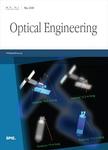版权所有:内蒙古大学图书馆 技术提供:维普资讯• 智图
内蒙古自治区呼和浩特市赛罕区大学西街235号 邮编: 010021

作者机构:Univ Georgia Dept Phys & Astron Natl Ultraviolet Monitoring Ctr Athens GA 30602 USA Queensland Univ Technol Sch Publ Hlth Ctr Hlth Res Brisbane Qld 4509 Australia Colorado State Univ Nat Resource Ecol Lab USDA V B Monitoring Program Ft Collins CO 80523 USA Natl Ocean & Atmospher Assoc Cent UV Calibrat Facil Boulder CO 80305 USA
出 版 物:《OPTICAL ENGINEERING》 (光学工程)
年 卷 期:2005年第44卷第4期
页 面:041009-1-041009页
核心收录:
学科分类:08[工学] 080401[工学-精密仪器及机械] 0804[工学-仪器科学与技术] 081102[工学-检测技术与自动化装置] 0811[工学-控制科学与工程] 0702[理学-物理学]
基 金:CS-REES, (34263-11248) Extension Service U.S. Environmental Protection Agency, EPA, (68-D-04-001, 68-D-99-179) U.S. Environmental Protection Agency, EPA U.S. Department of Agriculture, USDA
主 题:ultraviolet monitoring networks spectral measurement irradiance
摘 要:Several ground-based ultraviolet (UV) monitoring networks exist in the United States, each of which is unique in the instrumentation employed for measurements. Two of these UV networks are the U.S. Environmental Protection Agency s (EPA s) Brewer Spectrophotometer Network and the U.S. Department of Agriculture s (USDA s) UV-B monitoring network, with a combined instrument total of 52 sites, with 32 sites located in the mainland United States. The Brewer records full sky spectra from 287 to 363 nm with 0.55-nm resolution, whereas the USDA instrument is a broadband device that measures broadband erythemally weighted UV data. To date, limited comparisons of data collected from these networks have been analyzed for comparative and quality assurance (QA) purposes. The data we use is taken from sites where instruments from each program are colocated, namely, Big Bend National Park, Texas, and Everglades National Park, Florida. To reduce the contribution of errors in the Brewer-based instruments, the raw data is corrected for stray light rejection, the angular response of the full sky diffuser, the temperature dependence of the instruments, and the temporal variation. This reduces the estimated errors of the absolute irradiance values of each Brewer spectral measurement to approximately +/- 5%. The estimated uncertainty of the USDA instruments is approximately +/- 6% with a systematic bias of (-13 to 5% depending on the total ozone) and is comprised of (1) standard lamp measurement errors, (2) spectral response determination, and (3) the angular response of the diffuser. We perform comparisons between the Brewer spectrally integrated and erythemally weighted UV irradiance measurements and the data collected by the broadband erythemal UV meters at colocated sites between 1997 through to 2002. (c) 2005 Society of Photo-Optical Instrumentation Engineers.